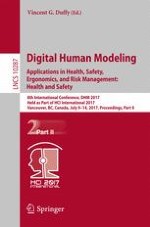2017 | OriginalPaper | Chapter
That’s so Meta! Usability of a Hypergraph-Based Discussion Model
Authors : Felix Dietze, André Calero Valdez, Johannes Karoff, Christoph Greven, Ulrik Schroeder, Martina Ziefle
Published in: Digital Human Modeling. Applications in Health, Safety, Ergonomics, and Risk Management: Health and Safety
Publisher: Springer International Publishing
Activate our intelligent search to find suitable subject content or patents.
Select sections of text to find matching patents with Artificial Intelligence. powered by
Select sections of text to find additional relevant content using AI-assisted search. powered by
